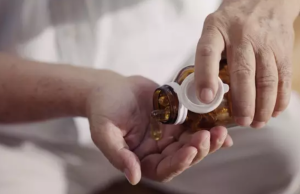
Black pepper, scientifically identified as Piper nigrum, extends beyond its role as a common kitchen ingredient; it serves as a versatile plant capable of introducing both taste and greenery to your living space.
Cultivating black pepper in containers becomes an engaging venture for gardening enthusiasts, presenting the pleasures of vibrant foliage and fragrant peppercorns.
This guide will lead you through the process of choosing optimal varieties for pot cultivation, sowing seeds, and ensuring the necessary care to yield high-quality black pepper directly from your home.
1. Selecting the Right Varieties

Not all black pepper plants exhibit the same qualities, particularly in the context of container cultivation. The following are some standout varieties recognized for their exceptional flavor, adaptability to potted environments, and widespread appeal:
Malabar Black Pepper: Originating from the Malabar Coast of India, this type is celebrated for its strong and distinctive flavor. Its moderate climbing habit makes it particularly well-suited for cultivation in pots.
Tellicherry Black Pepper: Frequently regarded as a gourmet option, Tellicherry pepper exhibits a larger size and a slower maturation process, facilitating the development of a more robust flavor. Its adaptability to limited space makes it an ideal choice for pot.
Lampong Black Pepper: Originating from Indonesia, Lampong black pepper is appreciated for its smoky and earthy notes. It thrives in pots, making it a great choice for indoor gardens.
2. Planting Black Pepper in Pots

To start your potted black pepper journey, follow these steps:
Choosing the Right Pot: Select a pot that is at least 12-16 inches in diameter with good drainage. Black pepper plants need room to grow.
Soil and Planting: Use a well-draining soil mix. Plant the seeds about a quarter-inch deep and keep the soil moist. Germination can take 1-3 weeks.
Location: Place your pot in a spot that receives partial sunlight. Black pepper plants thrive in warm, humid conditions but can be sensitive to direct, harsh sunlight.
3. Caring for Your Black Pepper Plant
Proper care is crucial for your plant to flourish:
Watering: Keep the soil consistently moist but not waterlogged. Over-watering can lead to root rot.
Temperature and Humidity: Aim for a temperature range of 75-85°F (24-29°C) and high humidity. Consider using a humidifier or misting the plant regularly.
Supporting Growth: As a climbing plant, black pepper will benefit from a support structure like a trellis or stake.
Fertilizing: Use a balanced, slow-release fertilizer every couple of months. Over-fertilizing can harm the plant.
Pruning: Regular pruning encourages growth and prevents the plant from becoming leggy. Prune any dead or yellowing leaves.
Pest Control: Keep an eye out for common pests like spider mites. Use organic pesticides if necessary.


Cultivating black pepper in containers proves to be a gratifying endeavor, providing both the advantages of freshly harvested spices and the aesthetic appeal of a charming houseplant.
By selecting the appropriate variety, following correct planting procedures, and consistently providing attentive care, you can relish the distinctive joy of harvesting your own black pepper. Embrace these recommended steps and tips, and you’ll soon take pride in being a successful cultivator of this valued spice!
Source: sharingideas.me




















